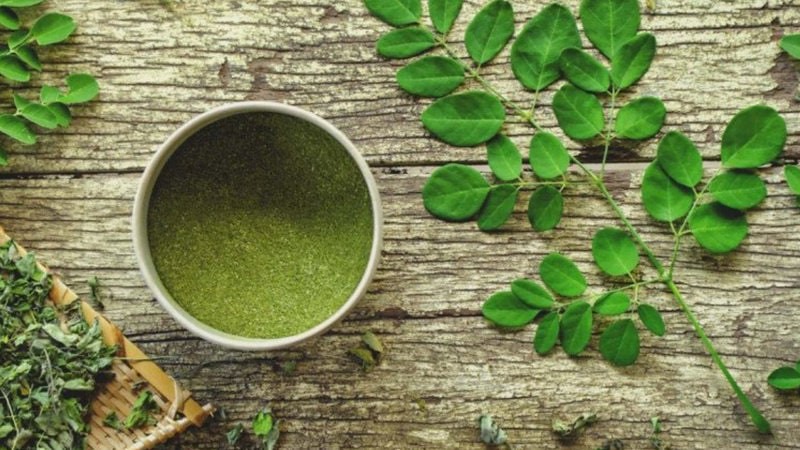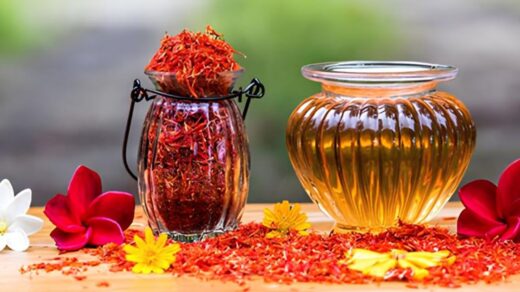Drumstick (Moringa) Health Benefits, Side Effects & How To Use?
Moringa is commonly known as a drumstick, it is a tree also called the “tree of life” for its various health benefits.

Moringa in Hindi is known by many names such as munga ara, munaga, Sarinjna, Sahijna, Shajmah, Segra, Shajna, etc. It is a medicinal plant that has a high content of vitamins and minerals such as carotenoids, iron, quercetin, vitamin C, polyphenols, chlorogenic acid, etc.
The other benefits are that it provides a powerful antioxidant and anti-inflammatory effect. It is used to treat some respiratory diseases, reduce anxiety in weight loss, and even control blood glucose in diabetics.
Scientifically, Moringa is known as Moringa oleifera, it is a vegetable tree. Most parts of the Moringa plant such as leaves, fruits, stem, and root can be consumed either in the form of tea; capsule, or powder.
The tastes of moringa leaves are slightly bitter flavor with grass-like undertones with a horseradish-like heat and drumstick taste like green beans but a little sweeter.
What is moringa used for?
This plant contains many benefits; you might wonder. What health benefits does moringa have? Moringa is used for many ailments such as asthma; high blood pressure; epilepsy; stomach and intestinal ulcers; arthritis.
Other joint pain (rheumatism); headache; kidney stones; cancer; diarrhea; constipation; stomach pain; thyroid disorders; intestinal spasms; fluid retention; heart problems etc. Below are some details for which moringa is used.[1]
1. Increases respiratory capacity: Helping to fight diseases such as asthma.
2. It prevents diabetes: The properties in moringa help to regulate oxidative stress, which reduces blood sugar levels, improving protection against cell damage.
3. It protects the heart: Preventing the absorption of cholesterol in the intestine and the formation of fatty plaques in the arteries, thus decreasing the risk of cardiovascular disease.
4. It regulates blood pressure: It can improve blood circulation due to its vasodilator effect.
5. It helps in weight loss: It contains fibers and a high amount of proteins that help to increase the feeling of fullness.
6. It prevents and combats anemia: It is because its leaves have a high amount of iron (105 mg per 100 g), favoring the increase of red blood cells.
7. Increase the body’s defenses- Immunity: it is because it has antioxidant substances such as polyphenols, vitamin C, and beta-carotene that stimulate the immune system.
8. It has an anti-inflammatory and analgesic effect: It is because it contains isothiocyanates, quercetin, and chlorogenic acid, which are substances that help to reduce the inflammatory process, relieving the symptoms of diseases such as rheumatism, inflammation of the prostate, for example.
9. It protects and moisturizes the skin: It is because it contains vitamins B1, B2, B3, B6, C, E, and A, favoring the healing of the skin.
10. It improves the health of the digestive system: It can prevent or treat stomach ulcers and help to combat constipation due to its high fiber content.
11. It helps to treat hemorrhoids: It is because it improves blood circulation causing a vasodilator effect.
12. It improves vision: It is because of its high content of beta-carotene, which is a precursor component of vitamin A.
13. It helps reduce the effects of menopause: The properties in it help to maintain levels of inflammation and oxidative stress during this controlled stage, favoring a natural balance of the hormones that are affected during this phase.
Properties of moringa
Moringa has been used for centuries for many health benefits due to its vast medicinal properties. The properties of moringa include antioxidant, anti-inflammatory, antidepressant, analgesic, antidiabetic, antiviral, vasodilator, anticholinergic, antifungal, antirheumatic, and cicatrizant action, etc.[2]
How to consume moringa oleifera?
Although there is still no proven scientific dose, some studies suggest that the intake of 150 to 200 mg/kg per day can provide all the benefits mentioned above.
The dose will depend on the way in which the plant is ingested, which can be.
Seeds: In case of consuming their seeds, they must be shelled and ingested with a glass of water, being able to consume 3 grams a day (approximately 2 to 3 seeds per day).
Powder: From 1/2 to 1 teaspoon a day (1 to 3 grams), being able to be added in juices, soups, coffee, or yogurts or even prepare a tea with the powder.
Capsules: 1 to 3 capsules a day in conjunction with meals, this varies according to the brand, so you should read the labeling of the product.
Moringa tea: Place 250 ml of water in a pot over medium heat until it boils, add 1 tablespoon (10 g) of moringa leaves, cover and let stand for 5 minutes, strain and drink 2 cups a day.
How long should it be taken?
The moringa is a plant that is currently in studies, so there is no specific time for which you can ingest this plant, the important thing is to ingest the dose recommended above without abuse.
Side effects
- According to Web M, It’s likely unsafe to use the bark, root, or flowers of moringa trees if you are pregnant.
- The chemical properties in the bark, root, and flowers can make the uterus contract that might induce a miscarriage. Besides this, there is not enough information available about the safety of using other parts of the moringa during pregnancy.
- In some parts of the world, moringa is used to increase breast milk production; however, there isn’t enough information to know if it is safe for the nursing infant.
- So the best way is to avoid moringa parts if you are breastfeeding and stay on the safe side and avoid use.


























